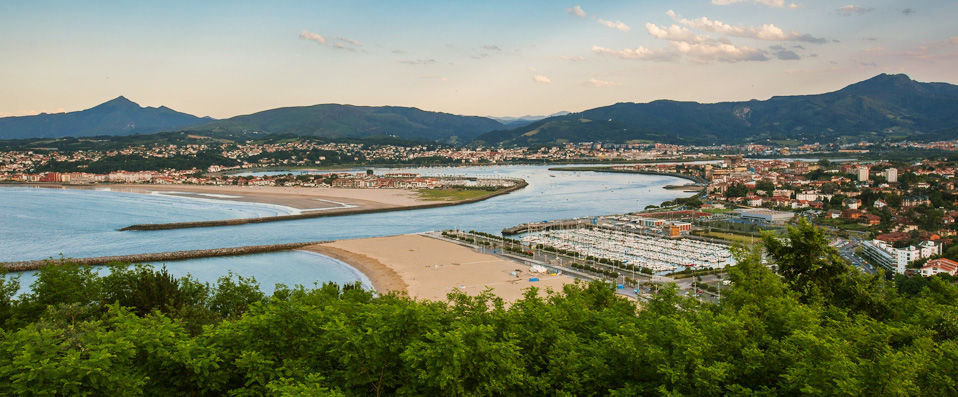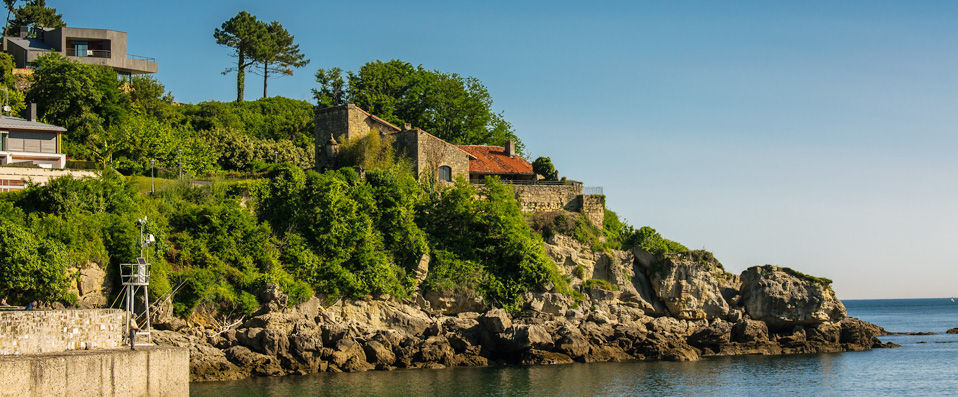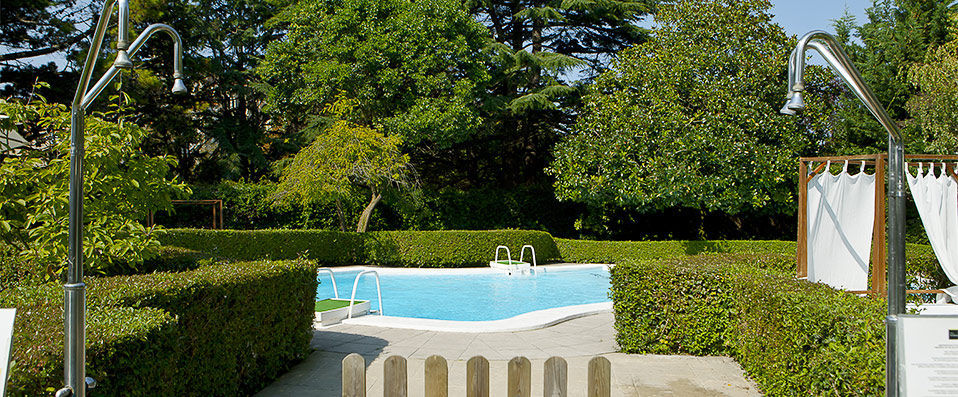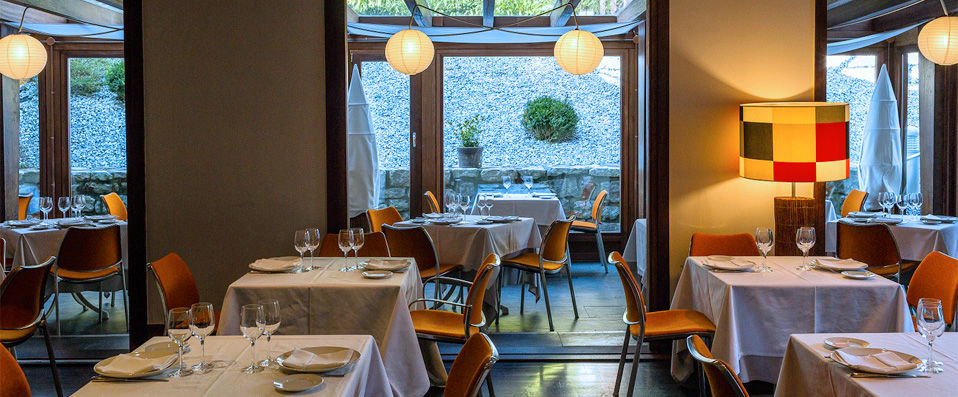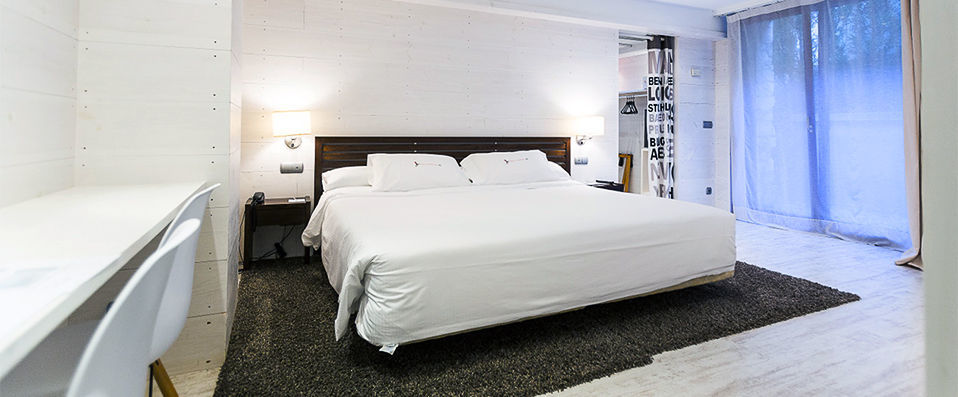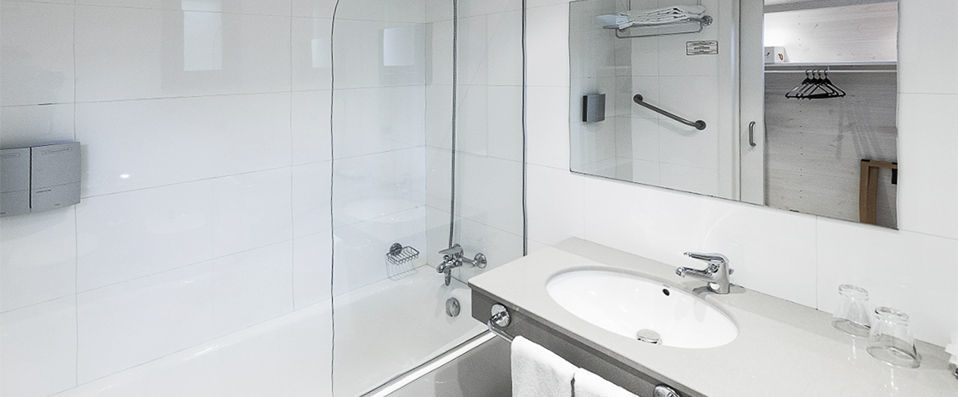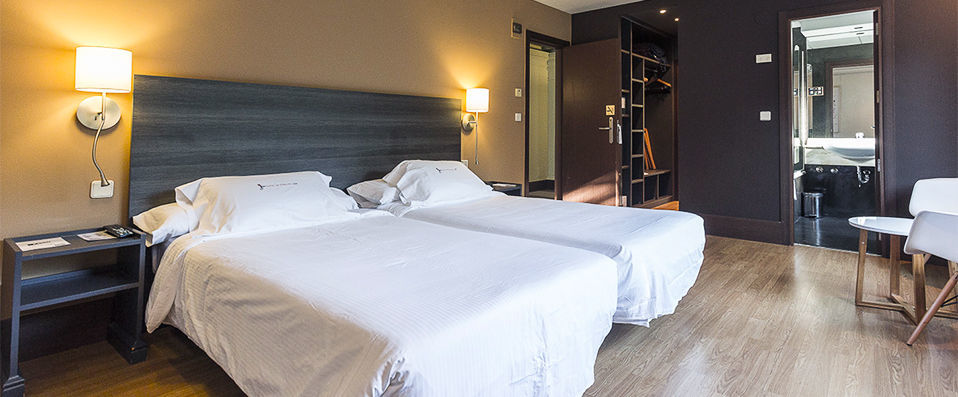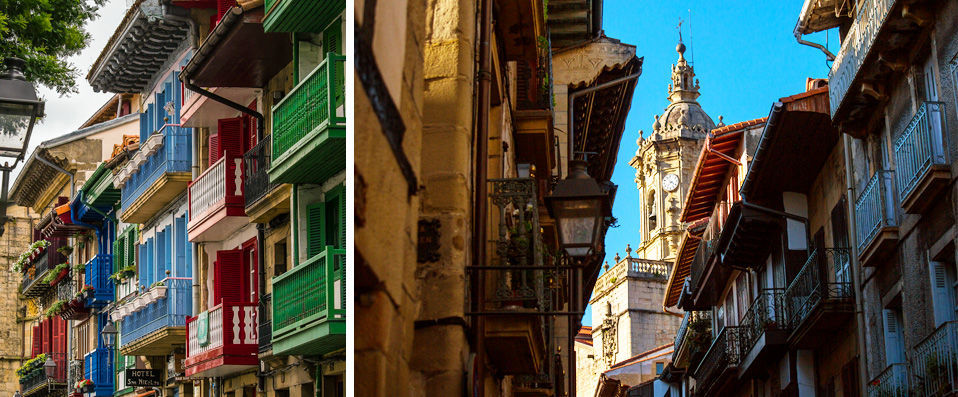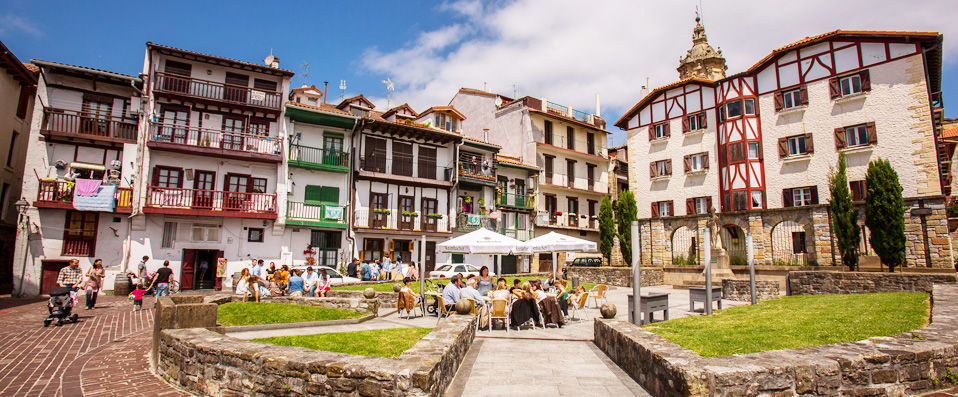This offer has ended
This flash sale is no longer available. Find all our current and upcoming sales:
View all offers The outdoor pool in the large, lush green garden of the hotel. With a shaded area, sunbeds and parasols, it can be an alternative to the beach in summer.
The outdoor pool in the large, lush green garden of the hotel. With a shaded area, sunbeds and parasols, it can be an alternative to the beach in summer. The restaurant, which is a benchmark for Basque cuisine from traditional to modern with a chef who is well-known beyond the Spanish borders. A great delight!
The restaurant, which is a benchmark for Basque cuisine from traditional to modern with a chef who is well-known beyond the Spanish borders. A great delight! Free parking, which is lovely as it means you do not have to waste time looking for a place in central Hondarribia (we heard it was difficult).
Free parking, which is lovely as it means you do not have to waste time looking for a place in central Hondarribia (we heard it was difficult). The reception staff are always ready with a smile. Responsive and attentive, they will answer all your questions and even help you plan your stay in Hondarribia and the Basque Country.
The reception staff are always ready with a smile. Responsive and attentive, they will answer all your questions and even help you plan your stay in Hondarribia and the Basque Country.
A great getaway in typical Basque country right on the French – Spanish border
VeryChic is here to help you best prepare for your next holiday:
Free cancellation, without justification, and with a full reimbursement of your booking, is guaranteed up to 7 days before your arrival.
Prior to your departure, be sure also to check the most up to date governmental travel advice to your destination and the rules in force there.
You must complete a mandatory health questionnaire in order to enter the country. A QR code will then be sent to you which will allow you to pass through the sanitary controls at the airport. Be sure to keep the QR code ready and available throughout your stay.
Please note that for anyone aged 6+, wearing a mask is mandatory in public spaces and places receiving the public
As a Welsh-speaking Welshwoman, I have long been interested in minority cultures, languages and cuisines, and the Basque country ranks high on my list of must-visit places. I have to admit, a little to my shame, that I never managed to find an opportunity (life gets in the way…) until last year on a walking trip in the Pyrenees, starting in Saint-Jean Pied-de-Port in France. Travelling there on the train, I was delighted to see station signs in a ‘foreign’ script, and to hear the distinctive language of the region, not to mention the great local cuisine. That was my trigger for a return visit to this unique region at more leisure, this time travelling with my sister to the Rio Bidasoa ****.
The next day we set out to explore the old fortress town of Hondarribia, not forgetting to take with us our Basque phrasebook. It has two distinct historic districts: the Old City, which is the ancient walled centre and the harbour area and only a five-minute walk from the Rio Bidasoa to the old city walls. Behind the walls, we found the second district of Hondarribia, where there are narrow houses and stately mansions built in the seventeenth and eighteenth centuries. We ventured into the cobbled streets of the port area, where the houses were all gaily decorated with pots of flowers, and sampled some tapas and local wine. Rio Bidasoa Hotel allowed us to experience Basque culture, cuisine, language and ambience in a comfortable and happy way.
Superior Room
Stay in a Superior Room for 2 people


-
- Surface area: 20m2
-
- Type of bed(s): 2 single beds
-
- Bathroom with: shower or bath, toilet, hair dryer, complimentary toiletries
-
- Bedroom with: TV with cable channels, desk, air conditioning/heating, coffee machine, safe
 24-hour reception
24-hour reception 42 Rooms (non-smoking)
42 Rooms (non-smoking) Wi-Fi available for free in the rooms and common areas of the hotel for VeryChic guests
Wi-Fi available for free in the rooms and common areas of the hotel for VeryChic guests Sugarri Restaurant: Mediterranean, French and international cuisine - open from Thursday-Monday afternoon
Sugarri Restaurant: Mediterranean, French and international cuisine - open from Thursday-Monday afternoon Bar-café
Bar-café Beaches only 500 metres away
Beaches only 500 metres away Activities: horse riding, diving, hiking, kayaking - for a surcharge
Activities: horse riding, diving, hiking, kayaking - for a surcharge Free parking (subject to availability) – No reservations possible
Free parking (subject to availability) – No reservations possible The establishment provides disabled and limited mobility access
The establishment provides disabled and limited mobility access Pets are not permitted in the establishment
Pets are not permitted in the establishment HEALTH MEASURES:
HEALTH MEASURES:
Important notes:
- Visit https://www.spth.gob.es/create to complete the mandatory health questionnaire for entering the country. A QR code will be sent to you which will allow you to pass through the sanitary controls at the airport. Be sure to keep the QR code ready and available throughout your stay. Please note that for anyone aged 6+, wearing a mask is mandatory in public spaces and places receiving the public.
- Due to the current health crisis, access to certain common areas, facilities and activities in and around the hotel cannot be guaranteed
- The ferry shuttle which takes you from Hondarribia to Hendaye in ten minutes, every half-hour until 1am in the summer. During the crossing, enjoy the vantage point for a unique view of the three cities that make up Chingudi Bay: Hendaye, Irun and Hondarribia.
- The Alameda, a Michelin starred restaurant, is one of the culinary landmarks in Hondarribia and the entire Basque coast
http://restaurantealameda.net
Minasoroeta Kalea, 1 20280 Hondarribia Gipuzkoa
(+34) 943 64 27 89 - Check out the fort of Guadalupe, a military construction from 1890 which consists of more than three thousand square metres. It is part of the main armed camps which defend the Spanish border with France. Located 190 metres above sea level, it offers spectacular panoramic views.
http://tourism.euskadi.net/en/cultural-heritage/the-fort-of-guadalupe/x65-12375/en/
Carretera de Jaizkibel 20280 Hondarribia, Guipúzcoa (Basque Country).
(+34) 943645458 - San Sebastian is just fifteen minutes’ drive away on the motorway. Dubbed the ‘Pearl of the Cantabrian Sea’, it would be a shame not to visit this amazing and fascinating city. Shell-shaped La Concha beach is one of the wonders of the Basque country and Spain. The countless tapas bars in the old town with all its charming small alleyways will delight you.
http://www.sansebastianturismo.com/en/
Boulevard, 8, 20003 San Sebastián
(+34) 943 48 11 66
Rio Bidasoa ★★★★
Nafarroa Behera
20280
Fontarrabie
Spain
The Rio Bidasoa **** Hotel is located just next to the Bay of Txingudi in the town of Fontarrabie (Hondarribia in Basque). This town is exactly located on the border between Spain and France on the left bank of the Bidassoa estuary.
BY PLANE

The hotel is located roughly 15 kilometres (9.5 miles) from Biarritz-Anglet-Bayonne Airport, also known as Biarritz Airport, it receives flights from many European capitals and major cities in the UK, Germany and France.
HOW TO GET FROM THE AIRPORT TO THE HOTEL

- By Taxi: Taxis are available outside the terminal building. The trip to hotel will cost about 60€ (around £43) and take 25 minutes.
- By Bus: There is a local bus, no. 14 (run by Chronoplus) which runs regularly from the airport to the city centre. It costs 1€ one way. From the centre of Biarritz you can take a train to Irun and the take a taxi to the hotel.
- Special condition : 2 nights minimum stay
- Local tourist taxes are included in the VeryChic prices
- Additional child bed (ages 2-12) or adult beds (ages 12+) available at a rate of 30€ per night at the time of booking with VeryChic
- Maximum of 1 additional bed per room
- Check-in from 3pm & check-out by 12pm
From Monday to Friday from 9 a.m. to 7 p.m. and on Saturdays, Sundays and French bank holidays from 9 a.m. to 6 p.m.
Local call charges may apply.